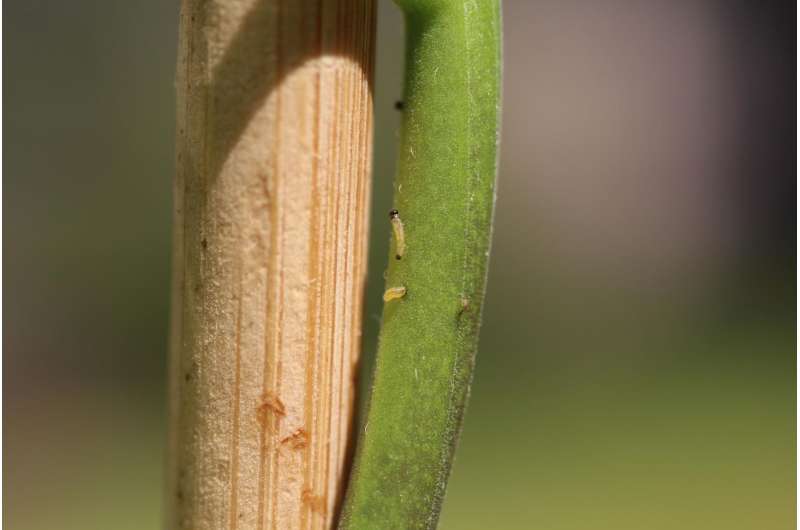April 26, 2016 report
Nightshade plant found to produce sweet nectar in wounds to attract ants that ward off herbivores

(Â鶹ÒùÔº)—A team of researchers from institutions in Germany and the Netherlands has found that bittersweet nightshade plants exude a nectar-like liquid that serves no purpose other than to attract ants, which in turn attack some of the animals that come to feed on the plant. In their paper published in Nature Plants, the team describes their study of the plant, the ants and the prey that feed on the plant.
The nightshade plant is very well known because of its extremely poisonous nature, berries that grow on them have been known to attract children—they have also appeared in popular literature such as the Harry Potter series. In this new effort, the researchers have discovered something else unique about the plants—they exude a nectar-like liquid when their leaves are chewed by herbivores. That liquid attracts ants which drive off or kill some of the pests that seek to eat or otherwise harm the plant. This is, the researchers report, the first known instance of a plant exuding material from a wound for the purpose of protection.
In testing the liquid found in wild plants, the researchers found that it contained mainly water and sucrose, which is far simpler than sap—it is not much use to the plant, but very attractive to ants. To find evidence that the plants were making the liquid specifically to attract ants, the team ventured into the woods and added droplets of water and sucrose to the leaves of some nightshade plants, and nothing but water to others, then sat back and watched to see what would happen. They found that the plants with the sucrose on their leaves attracted far more ants than did the plants with nothing but water added. They also noted that those plants with added sucrose suffered less damage.
Interestingly, the researchers found that the ants reduced predation by slugs, but not from flea beetles, which tend to cause the most damage. The ants did however, pull the beetle larva from stems where they had buried themselves after crawling up out of the dirt where they had hatched from eggs. Thus, the ants were indirectly protecting the plant against the beetles by preventing future generations from causing harm.

More information: Tobias Lortzing et al. Extrafloral nectar secretion from wounds of Solanum dulcamara, Nature Plants (2016).
Abstract
Plants usually close wounds rapidly to prevent infections and the loss of valuable resources such as assimilates1. However, herbivore-inflicted wounds on the bittersweet nightshade Solanum dulcamara appear not to close completely and produce sugary wound secretions visible as droplets. Many plants across the plant kingdom secrete sugary nectar from extrafloral nectaries2 to attract natural enemies of herbivores for indirect defence3,4. As ants forage on wound edges of S. dulcamara in the field, we hypothesized that wound secretions are a form of extrafloral nectar (EFN). We show that, unlike EFN from known nectaries, wound secretions are neither associated with any specific structure nor restricted to certain locations. However, similar to EFN, they are jasmonate-inducible and the plant controls their chemical composition. Wound secretions are attractive for ants, and application of wound secretion mimics increases ant attraction and reduces herbivory on S. dulcamara plants in a natural population. In greenhouse experiments, we reveal that ants can defend S. dulcamara from two of its native herbivores, slugs and flea beetle larvae. Since nectar is defined by its ecological function as a sugary secretion involved in interactions with animals5, such 'plant bleeding' could be a primitive mode of nectar secretion exemplifying an evolutionary origin of structured extrafloral nectaries.
Journal information: Nature Plants
© 2016 Â鶹ÒùÔº



















